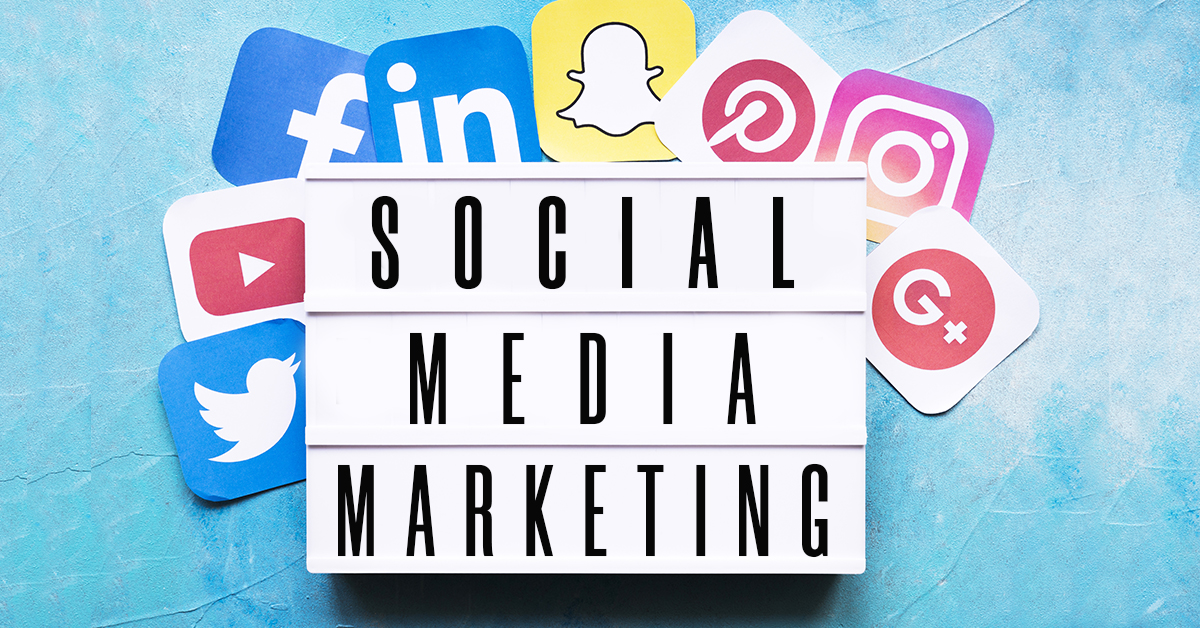8 Strategies To Level Up Online Business
21st December 2023
Thinking about online selling but unsure how to grow and expand your business?
We've got good news!
Barriers to starting and growing a business have never been lower. You might have already started your business, but you don’t know how to move forward. Well, you’ve come to the right place. There are some effective strategies that will help your business.

Capitalizing on digital opportunities, refining tactics, and constantly developing to meet the demands of a dynamic and competitive online market are all part of the journey of online business growth and expansion.
This post will explain how an online entrepreneur can open a physical location and the factors to take into account before doing so. Along with other ways to boost and expand the online business as well. So, let's get started!
1. OPEN A PHYSICAL STORE
i) ACCESS PHYSICAL OUTLET:
A business owner often needs an existing outlet and numerous additional outlets in various locations in order to grow their enterprise. Those who just use social media to do Businesses will profit from this, and you can read the articles below.
ii) MARKET RESEARCH & LOCATION:
Do thorough market research from the outset and locate a secure, respectable, and lucrative location.
Identify the ideal location by defining your specialization. Keep track of your customers' locations and act appropriately. The location of a customer is crucial for opening a business. In addition, we must investigate the accessibility, infrastructure, competition, and demography.
iii) BUSINESS PLAN & BUDGET:
To operate a real store, you need a budget. It contributes to achieving financial stability.
Furthermore, a company plan directs operations.
Create a business strategy that is exclusive to your physical store. Describe your objective, spending plan, and expected income. Ascertain the store's place in the company's larger business plan. A budget enables a company to plan out costs and account for changes in operations. Without a budget, a firm may incur excessive costs or perform poorly, which could ultimately result in the collapse of the organization.
iv) LEGAL & REGULATORY CONSIDERATIONS:
A businessperson must adhere to all legal requirements and procedures.
Obtain licenses or permissions to run a physical store. Register the new physical location of the firm while keeping in mind regional and state laws.
v) LEASE OF PURCHASE A PLACE:
A person can choose to lease a space to reduce costs or buy a permanent location to operate their business.
Establish a safe and permanent position for the outlet. To avoid burdensome fees and obligations associated with end-of-term ownership, one can either lease a property or purchase a property, however, based on your long-term goals and financial situation.
vi) INVENTORY MANAGEMENT:
Receive orders and monitor the arrival of inventory at the warehouse. A robust and flavorful software integrates both tasks.
Arrange the real store's inventory. It could be necessary to modify your online inventory and add products that are unique to the offline store. A program will make it easier to track both in order to make sure there are enough products or materials to meet demand without producing overstock or surplus inventory.
vii) TECHNOLOGY & POINT OF SALES (POS):
You may learn a lot about your customers from POS data, as well as about their earnings and the results of your organization.
Install the required technology, such as point-of-sale (POS) systems and cash registers, to manage sales, track orders, CRM, promotions, inventory, and a host of other functions. The whole firm can operate more easily with the greatest POS technology.
viii) MARKETING & PROMOTION:
In the absence of efficient marketing, consumer awareness of the product and the debut location may stay low and fall short of projections.
Using a variety of marketing platforms, publicize the launch of your physical business. To get clients, make the most of your current web presence and employ offline and online marketing strategies. A businessperson can advertise, launch a campaign, send emails, SMS, and more.
2. CONTENT MARKETING
Post case studies, whitepapers, blogs, and videos to demonstrate your knowledge and draw in prospective customers who are looking for information in these fields. Having a blog on your website allows you to provide excellent, suitable, and valuable content that solves problems for your target audience. Producing videos for YouTube, TikTok, or other platforms can be an effective way to showcase product demonstrations. In addition to providing solutions and insights in a well-written whitepaper, a businessperson may establish themselves as an authority in their industry and draw in clients who are looking for direction and knowledge.
3. SEO & WEBSITE OPTIMIZATION
Make sure search engine optimization (SEO) is applied to your website. Make use of pertinent keywords, design landing pages for various survey services, and provide visitors with educational information outlining the advantages of your survey solutions. In this situation, a businessperson should concentrate on conducting keyword research, on-page SEO, and technical SEO, which includes maintaining simple URLs and improving page speed and site structure. Easy-to-use and straightforward UX optimization. Local SEO can be used to target audiences in your area. Establishing a Google My Business account, making sure that your NAP (number, address, and phone number) is consistent and getting reviews.
4. SOCIAL MEDIA ENGAGEMENT
Interact with prospective clients on social media sites where they are present. Establish credibility by presenting educational materials, participating in dialogues, and responding to inquiries, and showcasing accomplished survey initiatives. Recognize your audience, find out what attracts them, and adapt your material accordingly. Post interesting, high-quality content, and draw viewers in with polls, stories, movies, and pictures. Keep up a consistent posting schedule to keep readers interested. To motivate your followers, ask queries, organize competitions or host pools. React promptly to messages or comments from your followers. Make use of hashtags to improve your posts' discoverability.
5. EMAIL MARKETING CAMPAIGNS
Create specialized email campaigns to connect with potential customers by sending them offers, success stories, and useful content about your survey services.
Establish the goal for your campaign. Is the goal to nurture leads and spread insightful material, increase website traffic, or advertise a product? Gather email addresses by using sign-up forms in-store, on your website, or on social media. Send more individualized content by segmenting your list according to actions, preferences, or demographics. Provide pertinent and interesting stuff for your readers. Make use of eye-catching subject lines, thoughtful salutations, and insightful material that clarifies, amuses, or resolves issues. Make your emails aesthetically pleasing and responsive to mobile devices. Make sure the receiver knows what to do by using a clear call-to-action (CTA), eye-catching images, and a clean layout. Keep refining your campaigns by observing what resonates most with your target demographic.
6. NETWORKING & INDUSTRY EVENTS
To network with possible clients, go to conferences, trade exhibitions, or industry events. Form alliances or sponsorships that will help you become more visible in your target market.
Do some advanced research on the event. Find out about the speakers, attendance, schedule, and any workshops or sessions that look interesting. Once at the event, confidently approach folks and strike up a discussion. Reach out to the individuals you encountered at the event and convey your desire to maintain contact or engage in joint ventures. In larger conferences, more specialized or smaller events can provide more private spaces for networking.
7. PARTICIPATE IN ONLINE FORUMS OR COMMUNITIES
Participate in online networks or forums focused on company growth, data analysis, and market research. Offer insightful analysis and practical solutions to build your authority in the area.
Choose communities or forums based on your target audience's interests. Prior to getting involved, spend some time listening in on conversations and learning about the dynamics of the community. To benefit others, impart your wisdom, thoughts, and experiences.
Establish a connection with other members by thanking them for their contributions and getting their feedback. Developing connections might result in partnerships or collaborations. Keep an eye on your participation and the effects of your work.
8. REFERRAL PROGRAMS
By providing incentives or rewards for successful referrals, you can encourage happy customers to recommend your services to others. Effective and economical marketing can be achieved through word-of-mouth.
Provide enticing rewards to the new consumer as well as the referrer. These could include: rebates, special deals, gifts, or loyalty points. Make sure the rewards are strong enough to encourage involvement.
Facilitate the process for clients to recommend your goods or services to others. Use tracking codes or referral links. Customize your correspondence when extending an invitation to clients to partake in the initiative. Emphasize the benefits of joining that they and their friends will experience it. After a successful recommendation, make sure incentives are given to the referrer as well as the new customer promptly and equitably. This promotes ongoing involvement.
Conclusion
These are the most effective methods followed by business experts. Many areas of a business must be constantly monitored in order to run successfully.
A user-friendly, reasonably priced package of software can greatly assist in efficiently and successfully monitoring all areas. Find comfort in using smooth software service platforms like Quickly Services.
More Relevant Articles

What Every Small Business Owner Should Know
Running a small business has a lot of challenges as well as opportunities for expansion. Every business owner gains knowledge along the journey that shapes their approach to management, long-term success, and development. The following significant insights might serve as a guide for small business owners as they embark on their entrepreneurial path.
More
6 unique tips to boost retail clothes sales that no one tells you about
Every company owner will tell you the same thing when asked what their daily motto is: "I want more sales and to grow my business." We are aware of that.
Revenue growth, pulling in more clients, and raising profits are all parts of growing your business. You can also broaden its customer base, hire more employees, stock more merchandise, and build new sites.
More
How Automation drives restaurant efficiency
The restaurant industry is known for its extensive hospitality, from friendly to efficient staff to a captivating environment and quality food. In this competitive age, businesses are implementing different strategies and methods constantly to gain an advantage. Restaurant businesses are also making innovative changes to draw in and build a loyal customer base. If you are looking for new ways to upgrade your restaurant, implementing automated tools to your restaurant would be the best way to go.
More
Top 5 Restaurant Management Software (RMS) & POS System in Bangladesh
A restaurant management system (RMS) can assist you to overcome difficulties in the restaurant business. Since there are so many things that can go wrong in a restaurant, monitoring through an all-in-one tracking system or integrated standalone solutions is extremely important. The majority of restaurant owners begin with a POS system and gradually add extensions as their business expands. Your requirements, however, will vary depending on your restaurant model, available services, and money.
More
5 keys to choosing a POS software for your restaurant
POS systems used to be confined to cash registers that just opened and closed. But today, restaurant point-of-sale technologies have advanced into something similar to an operating system for your entire business. Choosing the proper POS system for your restaurant is a crucial choice that may have a huge impact on your bottom line. Picking the right POS for your restaurant will not only allow you to keep your business organized and productive but also will assist you in providing a high-quality experience to your customers.

Incorporate a customer loyalty program into your marketing strategies
In today's market, simply having a traditional loyalty program is not enough. According to a prominent CRM platform, good loyalty programs are a key component of acquiring millennial customers. Offering appealing incentives as part of a loyalty program is an essential customer acquisition technique.
More
Importance of Data in Retail Business
For any industry, data is a key because the success of a business highly depends on understanding your customers by segments and the only way you can understand your customer’s and user’s behavior by segment is to have data on specific segments. But the challenge here is to determine how to use those data in relation to be able to disseminate that piece of information with the volume that you have and how you can use that to study your clients and industry.
More
How to Start a Restaurant Business: Things to Remember
Want to be your own boss? Researches have shown that owning your business will bring more success rate as it provides you more flexibility and you will sincerely enjoy what you do.
More
Digital Marketing and It’s Effectiveness
Regardless of whether your business is simply kicking off or has arrived at the stage of keeping up a proper client base, it's imperative to keep synced with the most current promoting patterns and strategies for your business. It's essential to put resources into a successful site structure and showcasing methodology.
MoreTraditional POS vs Cloud-based POS
When it comes to choosing a good Point of Sale (POS) system, it can be great
stress because it’s a one-time thing. If your point-of-sale system has been in
place for more than 5 years, chances are you have a traditional POS system in
your restaurant or retail business. However, the POS industry has undergone some
notable changes over the last several years with the evolution of cloud-based
POS systems, which now offer convenient iOS and Android options in place of
traditional systems.
We want to ensure our clients are educated in order to make the best
choice for their company — both today and in the future.